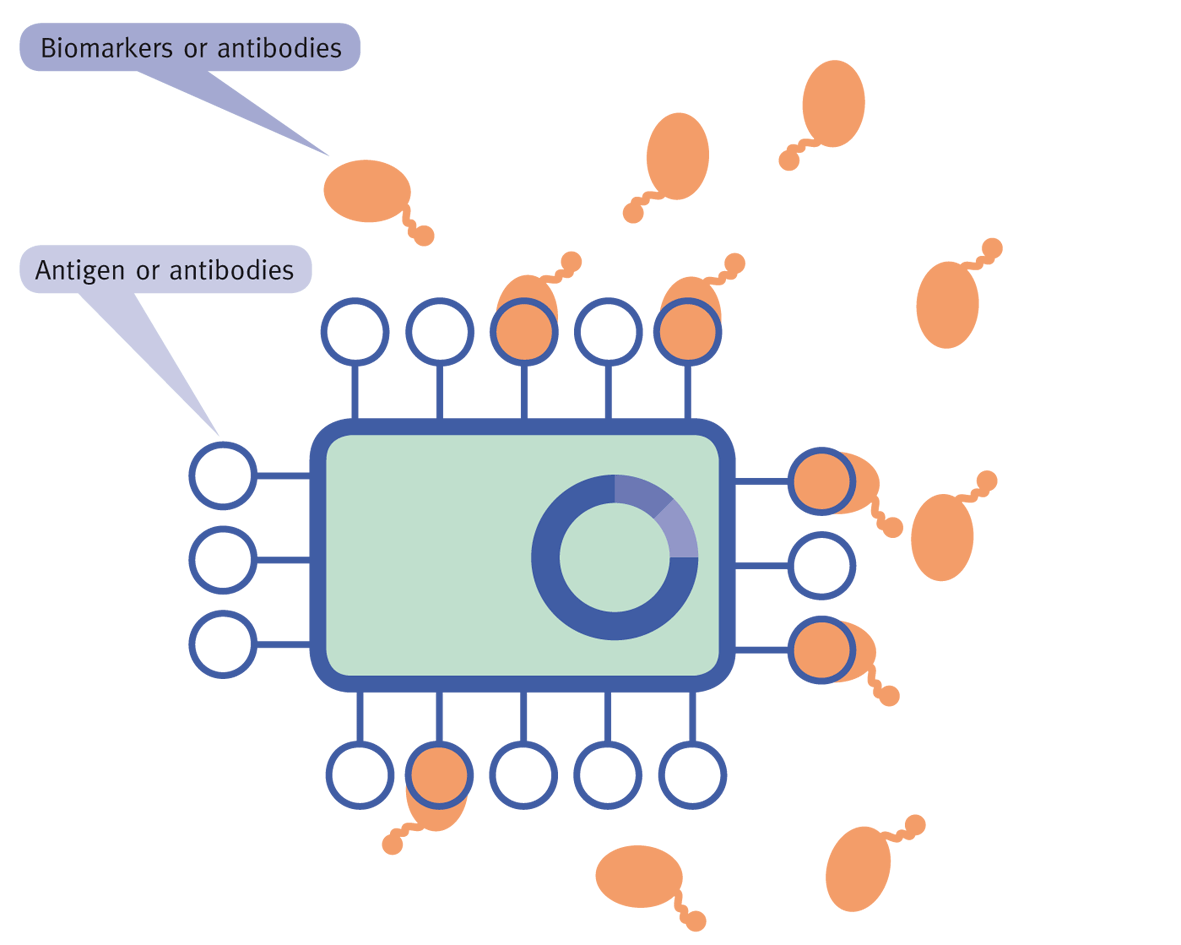|
BIOANALYTICS
Efficient development of new bioanalytical tools
PRINCIPLE

- Development of new bioanalytical tools
- Increased sensitivity by new coating technologies
- Enhancement by directed evolution of displayed molecules
The autodisplay technology enables the development and cost-effective production of new bioanalytical tools like SPR biochips and ELISA-assays for the identification of binding partners, like inhibitors, activators, biomarkers or autoantigens. The display of proteins/enzymes of the surface of E. coli facilitates the set-up of binding studies and affinity assays, because they can directly interact with their binding partners. Cells displaying the protein/enzyme of interest can be directly used to functionalise solid surfaces like microtiterplates for bioanalytical approaches. Therefore cells were simply adhered to the surface. If whole-cells are not applicable, the outer membranes, carrying the heterologous protein/enzyme, can be stripped off from the cell body and used for coating purposes. This is especially beneficial when the surface is hydrophobic, because the asymmetric assembly of the outer membrane enables a controlled orientation in that way that the inner part of the outer membrane is directed towards the surface.
 |
SELECTED EXAMPLES
Surface plasmon resonance chips (SPR):The Z-domain of protein A was expressed as a recombinant-fusion protein on the outer membrane of Escherichia coli by using Autodisplay technology, and the outer membrane with Z-domains was layered on a SPR biosensor as a highly sensitive molecular recognition layer. The outer membrane layer formation was demonstrated by using various surfaces with controlled hydrophobicity. The effect of orientation control by the outer membrane with Z-domains was estimated to cause far higher sensitivity and far improved limit of detection (LOD) in comparison to the conventional immunoassay by using a model analyte. The SPR biosensor with the outer membrane layer was applied for detection of C-reactive protein (CRP). From these experiments, the LOD of SPR biosensor was estimated to improve more than 100-fold compared to the SPR biosensor with the antibody-layer by physical adsorption.
Ro/SS-A: The 60 kDa Ro/SS-A antigen for autoantibodies can be found in sera from systemic lupus erythematosus (SLE) patients. As in the case of 60 kDa Ro/SS-A, antigens used in ELISAs are recombinantly expressed in Escherichia coli and time-consuming purification steps are required. To avoid these disadvantages, 60-kDa Ro/SS-A was expressed on the surface of E. coli using autodisplay. Cells displaying 60-kDa Ro/SS-A on the surface were applied as an antigen source demonstrating that autodisplay provides simple, rapid, and cheap access to human antigens for an ELISA to screen human sera against specific antibody reactions.
|